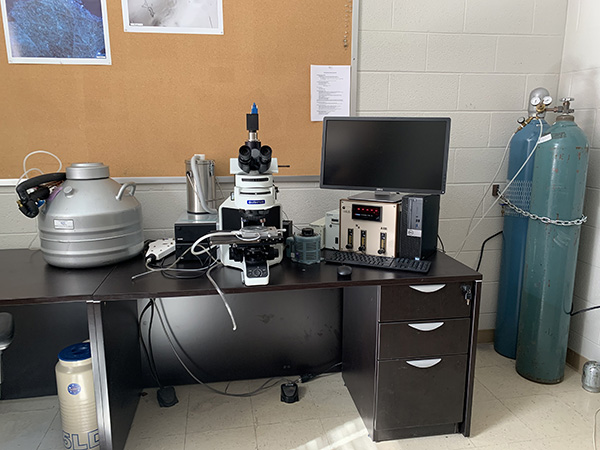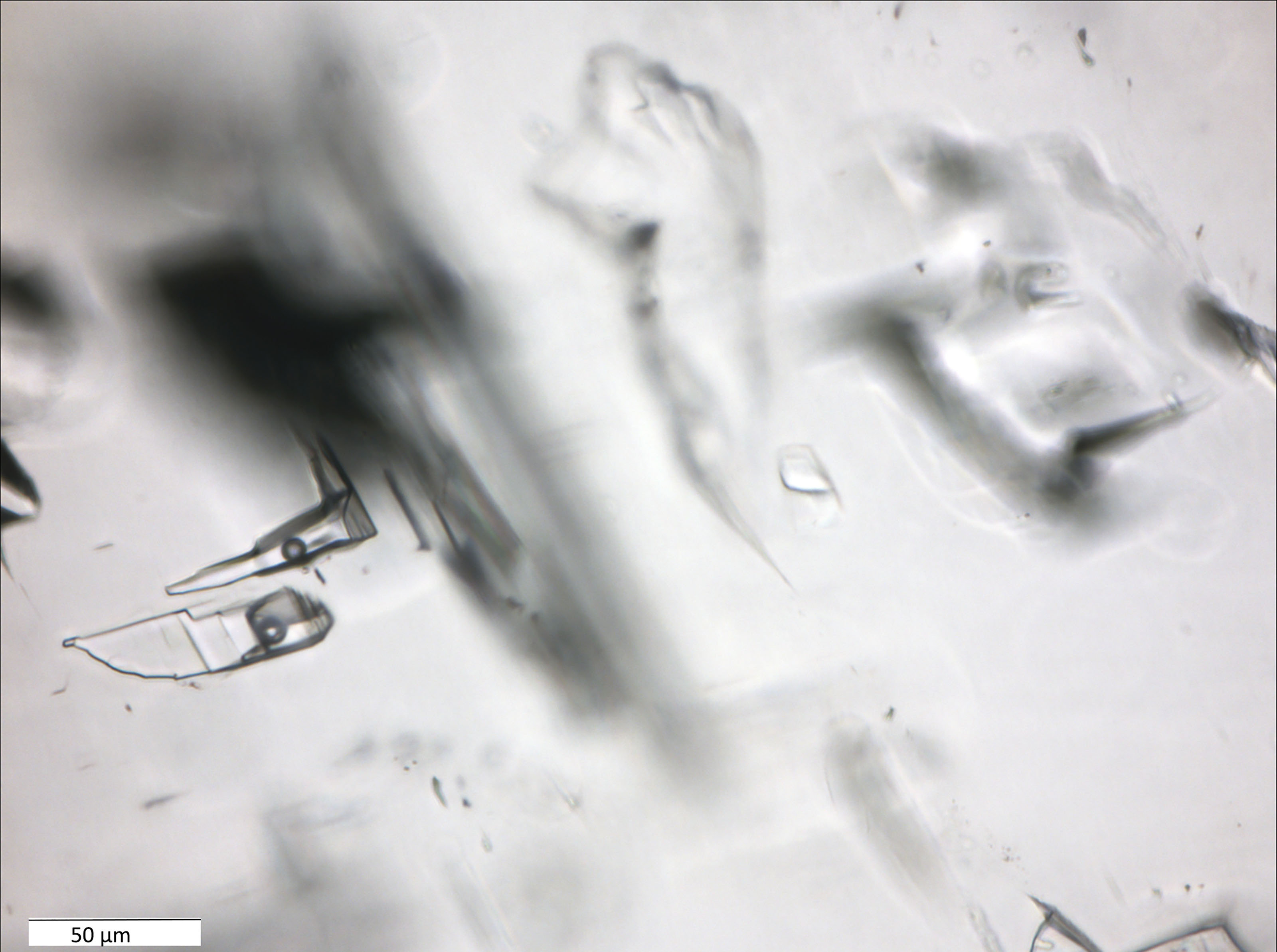Fluid Inclusion Laboratory
Fluid inclusions are micro-scale fluids trapped within a crystal. These fluids can be petroleum, gases, and/or aqueous. They can answer questions related to petroleum exploration and production (E&P) (Hall et al., 1998; Hall, 1996), such as:
- Detecting petroleum migration pathway
- Determining petroleum source and level of maturity
- Timing relationships between petroleum migration and porosity development
- Assaying fluid type and quality
- Seal identification and quality
- Identifying migration mechanisms within petroleum system, and more...
Fluid inclusions can also be used to define thermal history and petroleum maturation and migration relative to burial history (McLimans, 1987). This technique can be used at both the reservoir scale and the regional scale.
This lab is equipped with:
- Linkam THMSG 600 stage with LINK interface software
- FLUID INC. adapted U.S.G.S. Gas-Flow Heating/freezing System
- Olympus BX53M and IR microscope (equipped with 4X, 10X, 40X, and 100X long working distance objective lenses)
- Ultraviolet light source
Photomicrographs of fluid inclusions in cements. Top: Primary two-phase inclusions in pore-space-filling calcite cement, Tri-State mineral district, Neck City, MO (Mohammadi et al, 2019). Bottom: Ultraviolet photomicrograph from petroleum inclusions in saddle dolomite cement in Stack Play, OK.
References
- Hall, D. L., S. M. Sterner, and W. Shentwu, 1998b
- Applying fluid inclusions to petroleum exploration and production: Latin American Congress on Organic Geochemistry, Abstracts.
- Hall, D. L., 1996
- Application of Fluid Inclusions to Petroleum Exploration: Some Recent Advances and Case Studies, PACROFI VI - Electronic Program, University of Wisconsin.
- McLimans, R. K., 1987
- The application of fluid inclusions to migration of oil and diagenesis in petroleum reservoirs, Applied Geochemistry, v. 2, p. 585-603.
- Mohammadi, S., J. M., Gregg, K. L., Shelton, M. S., Appold, and J. O., Puckette, 2019
- Influence of late diagenetic fluids on Mississippian carbonate rocks on the Cherokee-Ozark Platform, NE Oklahoma, NW Arkansas, SW Missouri, and SE Kansas: in Grammer, G. M., Gregg J. M., Puckette, J. O., Jaiswal, P., Pranter, M., Mazzullo, S. J., and Goldstein, R. H., eds., Mississippian Reservoirs of the Mid-Continent, U.S.A.: American Association of Petroleum Geologists Memoir 122.


